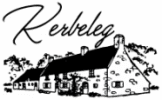Fascination with death is a major trend in Breton culture, dating back to a civilisation before the Gauls. For thousands of years, a sinister marsh has been considered the entrance to the underworld in the centre of the peninsula. The gloomy character of these places and the habit of building graves certainly contributed to the emergence of a religion centred on death, which is still practiced today.
The Druidic institution, whether of Celtic origin or traced back to the dolmen people, also played an important role in the intellectual development of the European West. Some of its traditions were preserved in medieval Christianity and in popular beliefs. If one accepts that many Druids became priests and integrated elements of their old faith into their new religion, it becomes easy to understand why the people changed few of their customs and rites while adopting the practices of another religion. This resulted in a fusion of the two under a Christian mask rather than a victory for the new religion.
According to Caesar, the Druids had great influence on the population and on political power in the 1st century BC. The Christian clergy easily took over this influence, as well as in other areas. Moreover, its power was increased by the Saxon invasions and the need for some of Britain’s inhabitants to flee from the conquerors. In many cases, the priests became the guides for the bands of emigrants crossing the sea to Armorica.


